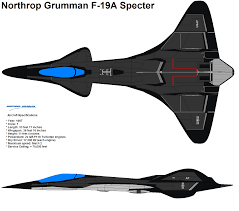Definition: Aircraft stability derivatives are mathematical quantities that describe how aerodynamic forces and moments change in response to small changes in flight conditions. These derivatives are crucial for analyzing the stability and control characteristics of an aircraft.
Click the Translate button(see right) on this post to set your Own Language to understand more perfectly!!
Aircraft Stability Derivatives Calculator
Continue Definition:
Aircraft Stability Derivatives
Aircraft stability derivatives are mathematical quantities that describe how aerodynamic forces and moments change in response to small changes in flight conditions. These derivatives are crucial for analyzing the stability and control characteristics of an aircraft.
Here's a breakdown considering the factors you mentioned:
Key Parameters:
Lift Curve Slope (Clα): This represents the change in lift coefficient (Cl) due to a change in angle of attack (α). A positive Clα indicates increasing lift with increasing angle of attack.
Drag Coefficient Slope (Cdα): This represents the change in drag coefficient (Cd) due to a change in angle ofattack (α). A positive Cdα indicates increasing drag with increasing angle of attack.
Pitching Moment Coefficient Slope (Cmα): This represents the change in pitching moment coefficient (Cm) due to a change in angle of attack (α). A positive Cmα indicates a nose-up pitching moment with increasing angle of attack (convention varies).
Velocity (V): This refers to the airspeed of the aircraft.
Supporting Equation:
The concept of stability derivatives is based on linearizing the complex non-linear relationship between aerodynamic forces and moments and various flight parameters. Here's a simplified equation for illustration:
ΔF = F'(α)Δα + F'(V)ΔV + ... (similar terms for other parameters)
where:
ΔF represents the change in a force or moment (e.g., Δlift, Δdrag, Δpitching moment)
F' represents the derivative of the force or moment coefficient with respect to a specific parameter (e.g., F' = dF/dα)
Δα and ΔV represent small changes in angle of attack and velocity, respectively
The terms F' in the equation represent the stability derivatives. The terms like F' (α) in this example specifically refer to stability derivatives related to angle of attack changes.
Example:
Consider an aircraft with a Clα of 6.1 per radian and a Cmα of -0.1 per radian (negative indicates nose-down with increasing angle of attack). This means for a small increase in angle of attack, the lift coefficient will increase by 6.1 times that change in angle of attack, and the pitching moment coefficient will decrease by 0.1 times the change in angle of attack. These derivatives provide valuable information for understanding the aircraft's response to changes in pitch attitude.
Note:
This is a simplified explanation. In practice, there are multiple stability derivatives for various combinations of forces, moments, and flight parameters. Flight mechanics analysis utilizes these derivatives to build mathematical models that predict the aircraft's response to control inputs and disturbances.
How it is Possible to Earn Money using the knowledge of Aircraft Response Derivatives in our real life application??????
There are several ways to leverage your knowledge of aircraft response derivatives to earn money in real-life applications. Here are some potential avenues:
1. Aerospace Industry Careers:
Flight Test Engineer: These engineers design, conduct, and analyze flight tests to gather data on aircraft performance and stability. Understanding stability derivatives is crucial for interpreting flight test data and evaluating aircraft handling qualities.
Aircraft Design and Analysis Engineer: This role involves designing new aircraft or analyzing existing ones for performance and stability. Knowledge of stability derivatives is essential for optimizing wing design, control surfaces, and overall aircraft behavior. Flight Control Engineer: Flight control systems rely on feedback from various sensors, including those measuring flight parameters. Understanding stability derivatives helps design control laws that utilize this data to maintain stability and improve handling characteristics.
2. Flight Simulation Development:
Flight Simulation Engineer: Flight simulators are crucial for pilot training and aircraft development. Accurately modeling aircraft behavior requires incorporating stability derivatives into the simulation software.
Flight Dynamics Engineer: These engineers develop the mathematical models that govern the flight behavior of an aircraft within a simulator. Knowledge of stability derivatives is essential for building realistic and effective flight simulation models.
3. Consulting Services:
Independent Aircraft Consultant: You can offer consulting services to smaller aviation companies or startups that may not have the in-house expertise for advanced flight dynamics analysis.
Expert Witness: In cases involving aircraft accidents or malfunctions, your knowledge of stability derivatives could be valuable in analyzing flight data and reconstructing events.
4. Research and Development:
Researcher at Aerospace Institutes: Research institutions often explore new technologies and concepts for future aircraft. Understanding stability derivatives helps analyze the impact of these new designs on aircraft performance and control characteristics.
Autonomous Flight Systems Development: The development of autonomous flight systems requires advanced control algorithms that rely on accurate modeling of aircraft dynamics. Knowledge of stability derivatives is crucial for developing these algorithms.
Earning Potential:
Salaries in the aerospace industry vary depending on experience, education, and specific role. However, positions requiring knowledge of aircraft response derivatives can be quite lucrative.
Additional Considerations:
While knowledge of stability derivatives is valuable, it's often just one piece of the puzzle. Success in these fields often requires additional expertise in aerodynamics, flight mechanics, control theory, and potentially software development.
Do YOU Want To Earn Money In Various Ways, Click The Link & Explore Your Field of Interest!!!











